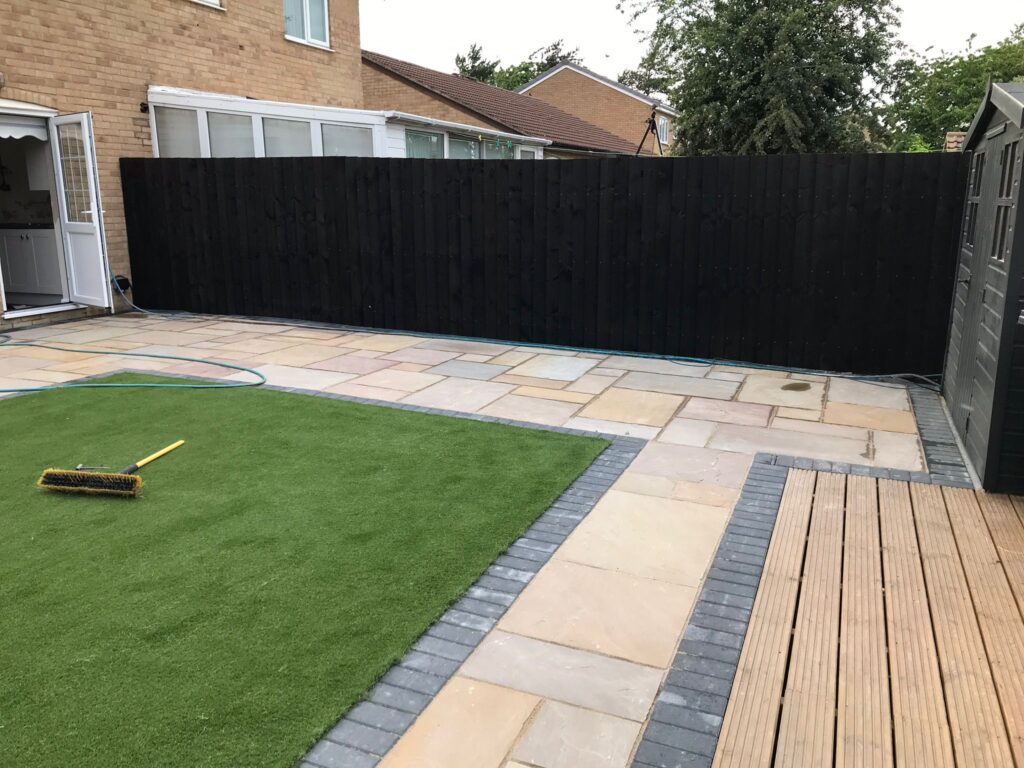How to Spot a Poorly Installed Tarmac Driveway Before It’s Too Late
A well-installed tarmac driveway is durable, smooth, and long-lasting, providing excellent curb appeal and functionality. However, if installed incorrectly, tarmac can deteriorate rapidly, leading to costly repairs and potential safety hazards. Spotting signs of poor workmanship early can save homeowners from unnecessary expenses and ensure a high-quality finish that lasts for years.
At Rushden Driveways & Patios, we specialise in professional driveway installations in Rushden, Northamptonshire, ensuring our clients receive top-quality, long-lasting surfaces. Here, we explain how to identify a poorly installed tarmac driveway before it’s too late.
Signs of a Poorly Installed Tarmac Driveway
1. Uneven Surface and Poor Levelling
A tarmac driveway should be smooth and even. If you notice dips, bumps, or an irregular surface, it could indicate that the groundwork was not properly prepared. Poor levelling can lead to:
- Water pooling in low spots, which weakens the tarmac over time.
- Uneven pressure on the surface, causing premature cracking.
- Poor drainage, leading to erosion and further structural issues.
2. Cracking and Early Wear
While tarmac is a flexible material, it should not develop cracks shortly after installation. Cracks appearing within a few months of completion may be a sign of:
- Insufficient base preparation, leading to ground movement.
- Inferior quality tarmac mix, making the surface brittle.
- Inadequate compaction, resulting in weak spots that are prone to damage.
3. Poor Edging and Finishing
The edges of a tarmac driveway are crucial for stability and longevity. Poor edging can lead to crumbling and structural failure. Signs of substandard edging include:
- Ragged or unfinished edges that look rough and uneven.
- Tarmac spilling over onto adjoining surfaces without a clean boundary.
- Lack of reinforcement, leading to edges breaking away over time.
4. Water Pooling and Drainage Issues
A properly installed tarmac driveway should have an effective drainage system in place. If water sits on the surface for extended periods, it suggests:
- Poor grading, where the driveway slopes in the wrong direction.
- Lack of adequate drainage channels to direct water away.
- Compaction issues that prevent water from running off correctly.
Water damage is one of the leading causes of premature driveway failure, so proper drainage is essential.
5. Loose or Flaking Tarmac
A high-quality tarmac surface should be smooth and compact, not loose or flaky. If you notice:
- Small stones or pieces of tarmac breaking away from the surface.
- Sections of the driveway lifting or separating.
- A rough, uneven texture rather than a sleek finish.
These are all indicators that the installation was rushed, and the material was not properly compacted during the laying process.
6. Lack of a Solid Base Layer
A tarmac driveway is only as strong as the base it sits on. A poor foundation leads to sinking, cracking, and instability. Warning signs include:
- A spongy feel when walking or driving on the surface.
- Sudden depressions forming under vehicle weight.
- Visible movement in sections of the driveway.
A professionally installed tarmac driveway should have a well-compacted sub-base, typically made from crushed stone or hardcore, to provide the necessary strength.
7. Premature Fading and Deterioration
While all tarmac surfaces will fade over time, a newly installed driveway should retain its deep black colour for a considerable period. If the tarmac looks faded or patchy soon after installation, it may indicate:
- An inferior mix with too much filler material.
- Overexposure to sunlight due to poor sealing.
- Inadequate binding agents, leading to surface breakdown.
8. Visible Tarmac Layers Separating
In a properly installed driveway, the tarmac layers should bond seamlessly. If you notice layers peeling or separating, it suggests:
- The tarmac was not applied at the correct temperature.
- The surface was not adequately compacted during installation.
- A poor-quality mix was used, reducing adhesion.
This issue can lead to rapid deterioration and the need for resurfacing much sooner than expected.
How to Avoid a Poorly Installed Driveway
Choosing a reputable contractor is key to ensuring a high-quality tarmac driveway. Here are some essential steps to take before committing to an installation:
- Check previous work – Ask to see examples of completed driveways.
- Ask about the installation process – A professional contractor should explain the steps involved, including base preparation, drainage planning, and compaction.
- Ensure quality materials are used – A good mix of aggregates, bitumen, and binding agents is crucial for durability.
- Verify proper groundwork is completed – A solid sub-base should be laid and compacted before tarmac is applied.
- Get a written guarantee – A reputable installer should offer a guarantee covering workmanship and materials.
Why Choose Rushden Driveways & Patios?
At Rushden Driveways & Patios, we pride ourselves on delivering expertly installed tarmac driveways in Rushden, Northamptonshire. Our team ensures every driveway is built to the highest standards, using top-quality materials and professional techniques to create durable, well-finished surfaces.
Conclusion
A poorly installed tarmac driveway can lead to costly repairs and long-term issues. By recognising the warning signs early—such as uneven surfaces, cracking, poor edging, and drainage problems—you can take action before the damage worsens. Choosing an experienced and reputable contractor ensures a high-quality finish that will stand the test of time.
If you are considering a new tarmac driveway or need professional advice, contact Rushden Driveways & Patios today. Our team is ready to provide expert solutions tailored to your needs.
Call us on: 01933 823 204
Click here to find out more about Rushden Driveways & Patios
Click here to complete our contact form and see how we can help with your driveways.

